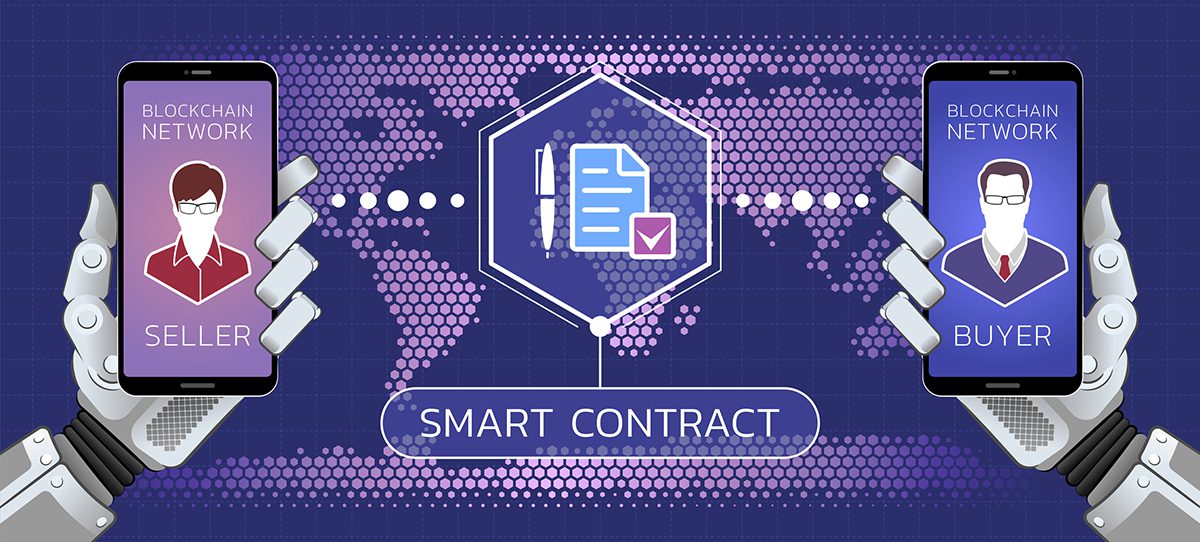According to the 2021 World Economic Forum Analyst Report, distributed ledger technology, and smart contracts have the capacity to transform the handling of $867 trillion in capital markets.
In the Decentralized Finance (DeFi) sector alone there is over $200 billion in total value locked in smart contracts and this is increasing rapidly as the sector grows.
This increase in popularity does not, however, come without its issues. As the sector grows so do the needs of the Decentralized Applications (DApps) within it, calling for smart contracts that carry out increasingly complex tasks.
Smart contracts are automatic self-executing agreements that operate without the need of a third party on a decentralized blockchain network. They underpin many of the agreements on blockchain networks and are essential to the inner workings of DeFi.
When smart contracts were theorized in 1994, the idea was to create simple agreements that automated transactions. They gained fame with the creation of Ethereum and since have experienced a global boom with the increasing popularity of DeFi and associated DApps.
With the increasing popularity, it has become clear that there is a much higher need for more complex agreements.
Challenges abound
Smart contract technology, although essential to the digitalization of financial platforms, does not come without challenges, many of which are becoming more apparent as their popularity grows.
The coding of smart contracts is difficult and the result of bad coding can cause unintentional loopholes which can be exploited by bad actors leading to a breach of security of transactions. The most recent of these was the attack on Binance based DeFi protocol, Qubit, which on Jan. 28, 2022, was exploited for $80 million USD.
In addition, translation of the code into everyday language is complicated, at times creating vague terms which are open to interpretation, resulting in disputes between parties.
Aside from the complexity of the coding, the needs of the DApps the smart contracts have to cover are becoming more intricate. This has resulted in a need for multiple smart contracts to be put in place, functioning simultaneously and increasing the energy consumption used for their validation. This is in addition to the energy costs and time needed for the validation of transactions using data spread across multiple blockchains.
Since the creation of Ethereum (the first and arguably one of the most successful platforms due to ease of app development) network congestion, slow transaction rates, and high gas rates have forced many DeFi users to look for alternative platforms.

Security, speed and inter-chain operability
Cardano (ADA) and Polkadot (DOT), although just two of many altcoins being developed to solve these issues have set their focus on three major issues in the sector; security, ease, speed of use, and inter-chain operability.
Security is a major concern in DeFi, with a record $1.3 billion in DeFi scams and exploits stolen in 2021. Therefore, it is a focus of development for smart contracts. Cardano is a blockchain platform split into two layers built on a proof-of-stake consensus protocol (called Ouroboros) that validates transactions without high energy costs.
As stated by the creators, the use of the Haskell programming language and mathematically verifiable security enables Cardano “to pursue evidence-based development for unparalleled security and stability” making Ouroboros “the first provably secure proof-of-stake protocol… more secure, scalable, and energy-efficient than anything that has come before.”
According to the insights on the Cardano blockchain shared on Google’s data studio, on Jan. 27, 2022, the total number of smart contracts on the Cardano network surpassed a record 1,000. This brings the total value of their DeFi sector to well above $70 million.
Promising growth
Compared to Ethereum, which currently hosts $118 billion USD in smart contracts, it is a tiny amount. However, given Ethereum’s long-established infrastructure and that Cardano only released its smart contract update in September 2021, the growth is promising.
Given their focus on security, the increase in DApps on the Cardano blockchain could be seen as symptomatic of the market’s need for more security within smart contracts.
Polkadot (DOT) works in a similar way to Cardano in the sense it has more than one layer. It seeks to meet the needs of the increasing complexity of transactions by providing three layers of blockchains: The Relay chain, where transactions are finalized, Parachains, custom blockchains connected to the Relay chain which support the use of smart contracts and are used to validate transactions, and Bridges, which interact with other blockchains to enable transactions without a central exchange.
The Parachains provide the specific Relay chain they are connected to with a customizable environment supporting multiple smart contracts to cover a variety of protocols for the same chain without gas fees, streamlining transactions.
The key aspects to Polkadot aside from the layered blockchain include the extremely customizable smart contract layer, allowing for evolution and flexibility.
Bridge layer
As well as this the bridge layer maximizes the decentralization of the DApps built on the Polkadot platform allowing them to function across different blockchains seamlessly, adding to its performance and versatility.
The ecosystem of Polkadot, with its capacity of just under 170 transactions per second, functions efficiently with many favoring its cross-chain interoperability.
Over the last 12 months, Polkadot has seen value gains of 160% with many institutional and retail players including them as part of their investment schemes’ diversification. In a report released in November 2021 by blockchain analytics group, Messari, it was revealed that Polkadot was the most popular asset with investments from 21 of the world’s 53 most prominent fund managers.
Although DeFi and smart contracts are still in their relative infancy, the development within the sector is working at hyper speed. Cardano and Polkadot are just two of many blockchains working to improve the operability of smart contracts within the DeFi sector.
As can be seen from their recent gains, many institutions are focused on implementing infrastructure which works to solve past issues, and studies to improve efficiency, such as integration of Artificial Intelligence, are well underway.


